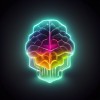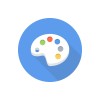The 14 Best Text to Image AI Generators: Transform Words into Images
If a picture is worth a thousand words, imagine the possibilities when you can generate images directly from your text. With the latest text to image AI generators, you can turn your words into captivating visuals that grab your audience's attention. Below is a list of the best text to image generators out there.

Experiment, imagine, and make an infinite range of creations with Firefly, a family of creative generative AI models coming to Adobe products
Visit website➔
Get creative with your words and watch them transform into stunning pictures that tell a story. Turn text into an image using Canva’s free AI image generator app and use them to add visual flavor to your designs.
Visit website➔

Text-to-image uses AI to understand your words and convert them to a unique image each time. Like magic.
Visit website➔

Create beautiful artwork using the power of AI. Enter a prompt, pick an art style and watch WOMBO Dream turn your idea into an AI-powered painting in seconds.
Visit website➔
Convert words to images in seconds with Fotor's free AI image generator. Input the text prompts and transfer your imagination into arts now.
Visit website➔
Image Creator is a product to help users generate AI images with DALL-E. Given a text prompt, our AI will generate a set of images matching that prompt.
Visit website➔
Create amazing artworks in seconds using the power of Artificial Intelligence.
Visit website➔
DALL·E can create original, realistic images and art from a text description. It can combine concepts, attributes, and styles.
Visit website➔
Convert words into an image in mere seconds with the Picsart AI Image Generator. Type a detailed description and watch your vision transform into vibrant, AI-generated art.
Visit website➔
Stable Diffusion is a latent text-to-image diffusion model capable of generating photo-realistic images given any text input, cultivates autonomous freedom to produce incredible imagery, empowers billions of people to create stunning art within seconds.
Visit website➔
Starryai is an AI art generator app. You simply enter a text prompt and our AI transforms your words into works of art.
Visit website➔Good to know...
How do text to image AI generators work?
Text to image AI generators work by using advanced machine learning algorithms to convert textual inputs into visual outputs. The process typically involves the following steps:
- Preprocessing: The text input is analyzed and cleaned to remove any irrelevant or unnecessary information.
- Text embedding: The text is then transformed into a numerical vector, also known as text embedding, using techniques such as word2vec or GloVe.
- Image generation: The text embedding is then used as input to an image generation model, such as a generative adversarial network (GAN), which creates a visual output based on the input text.
- Postprocessing: The generated image is then refined and optimized to improve its quality and visual fidelity.
The accuracy and quality of the generated images depend on the complexity and accuracy of the models used in each step of the process, as well as the size and quality of the training dataset used to train the AI model.
What are the benefits of using text to image tools?
There are several benefits of using text to image AI tools, including:
- Time-saving: Text to image AI software can create high-quality images in a matter of seconds, saving users valuable time and effort compared to traditional image creation methods.
- Cost-effective: Creating custom images can be expensive, especially if you need to hire a professional graphic designer. Text to image AI offers a more cost-effective alternative, as they require no human labor or specialized software.
- Creativity: Text to image AI generators can help users unlock their creativity by providing them with a visual representation of their ideas. Users can experiment with different text inputs to generate a variety of images and explore new creative possibilities.
- Accessibility: Text to image AI generators can be used by anyone, regardless of their level of design expertise. This makes it easier for businesses, marketers, and content creators to generate high-quality visuals without needing to rely on external resources.
- Scalability: Text to image AI generators can easily create large numbers of images, making them ideal for creating visual content for marketing campaigns, social media, or websites.
- Consistency: Text to image AI generators can create consistent and uniform images that match the tone and style of your brand or content. This ensures a cohesive and professional look across all your visual assets.
Overall, text to image AI tools can offer a range of benefits for businesses, marketers, content creators, and anyone who needs to generate high-quality images quickly and efficiently.
Can text to image AI generators create high-quality images?
Yes, text to image AI generators have the potential to create high-quality images, especially when using the latest and most advanced models. However, the quality of the generated images can vary depending on several factors, including:
- The complexity of the image: Some text to image AI generators are better suited to simple or abstract images, while others can generate more complex and realistic images.
- The quality of the input text: The quality and specificity of the input text can affect the quality of the generated image. More detailed and specific descriptions can lead to more accurate and detailed images.
- The size and quality of the training dataset: The quality and size of the dataset used to train the AI model can also affect the quality of the generated images. Larger and more diverse datasets can lead to more accurate and diverse image generation.
- The sophistication of the AI model: More advanced and sophisticated AI models, such as GANs, can generate more realistic and high-quality images compared to simpler models.
Overall, while text to image AI generators have the potential to create high-quality images, it's important to choose a generator that is well-suited to your specific needs and use case, and to carefully evaluate the quality of the generated images.
What types of text can be used with text to image AI tools?
Text to image AI applications can be used with a wide variety of textual inputs, including:
- Short phrases and sentences: Text to image AI applications can create simple images based on short text inputs, such as slogans, taglines, or captions.
- Descriptive paragraphs: More detailed and specific text inputs can lead to more accurate and detailed images. For example, a descriptive paragraph about a landscape can be used to generate a realistic image of that landscape.
- Product descriptions: Text to image AI tools can be used to create product visuals based on product descriptions, helping businesses generate more engaging and eye-catching product imagery.
- Stories and narratives: Text to image AI tools can be used to visualize stories or narratives, creating a visual representation of the plot or setting.
- Poetry and creative writing: Text to image AI tools can be used to create abstract or metaphorical images based on poetic or creative writing inputs.
In general, the more specific and detailed the textual input, the more accurate and detailed the generated image is likely to be. However, different text to image AI generator tools may be better suited to different types of text inputs, so it's important to choose a generator that is well-suited to your specific needs and use case.
How can I choose the best text to image AI generator for my needs?
Choosing the best text to image AI generator tool for your needs can depend on several factors. Here are some considerations to keep in mind:
- Purpose: Determine your primary use case for the text to image generator. Are you looking to create simple graphics for social media, or detailed product visuals for a website? This can help you determine the type of generator you need.
- Quality: Evaluate the quality of the generated images, and make sure they meet your expectations. Look for generators that provide high-resolution outputs and offer a range of customization options.
- Ease of use: Consider how user-friendly the generator is, and whether it requires any technical expertise or design knowledge. Look for generators that are easy to use and require minimal setup.
- Customization: Look for generators that offer a range of customization options, such as color schemes, font styles, and image styles. This can help you create unique and personalized images that match your branding and messaging.
- Integration: Consider whether the generator integrates with your existing workflow or tools, such as social media platforms or content management systems.
- Pricing: Evaluate the pricing options for the generator, and consider the long-term cost of using the tool. Some generators may offer a free trial period or a free version with limited features.
- User reviews: Read user reviews and testimonials to get an idea of how other users have found the generator to be useful and effective.
Overall, it's important to choose a text to image AI generator that meets your specific needs and use case, and that provides high-quality, customizable, and user-friendly image outputs.
What are some real-world applications of text to image AI tools?
Text to image AI applications have a wide range of real-world applications across various industries. Here are some examples:
- Service companies: Text to image AI generators can be used to create product/service images based on textual product descriptions, making it easier for businesses to generate high-quality and consistent product visuals.
- Advertising: Text to image AI generators can be used to create eye-catching and engaging ad visuals based on ad copy or taglines, helping businesses increase brand awareness and drive sales.
- Design: Text to image AI generators can be used to generate visual design elements, such as logos, icons, and illustrations, based on text inputs, making it easier for designers to create unique and personalized designs.
- Gaming: Text to image AI generators can be used to generate realistic and detailed game assets, such as characters, environments, and objects, based on game descriptions or narratives, helping game developers create more immersive and engaging games.
- Fashion: Text to image AI generators can be used to create fashion visuals based on fashion descriptions, helping fashion brands create consistent and high-quality fashion imagery.
- Education: Text to image AI generators can be used to generate visual aids, such as diagrams, illustrations, and charts, based on textual explanations, making it easier for educators to create engaging and informative learning materials.
- Healthcare: Text to image AI generators can be used to generate medical illustrations and diagrams based on medical descriptions, making it easier for healthcare professionals to explain complex medical concepts to patients.
Overall, text to image AI generators have a wide range of real-world applications across various industries, helping businesses and organizations create high-quality and engaging visual content.
Are there any ethical concerns with using text to image AI tools?
Yes, there are several ethical concerns with using text to image AI tools. Here are some of the most significant ones:
- Misuse of AI-generated images: Text to image AI tools can be used to create fake or misleading images that can be used to spread disinformation, propaganda, or to manipulate public opinion. For example, AI-generated images can be used to create fake news articles, political propaganda, or to manipulate images of people, products, or events.
- Privacy and security: Text to image AI tools can be used to generate images of people without their consent, violating their privacy. Additionally, these tools can be used to generate images that can be used for phishing attacks or other malicious activities.
- Bias and discrimination: Text to image AI tools can reflect the biases of the data they are trained on, leading to discriminatory or offensive images. For example, if the training data only contains images of a certain race or gender, the AI-generated images may also only feature people of that race or gender.
- Ownership and copyright: Text to image AI tools raise questions about who owns the generated images and who has the right to use them. Additionally, there may be copyright issues if the tool generates images that are similar to existing copyrighted works.
- Psychological impact: AI-generated images may have a psychological impact on people, such as causing confusion or anxiety. This is especially true if the images are used to create fake news or other types of propaganda.
It's important for developers and users of text to image AI tools to be aware of these ethical concerns and take steps to address them. This may involve implementing ethical guidelines, being transparent about the use of AI-generated images, and considering the potential impact of these tools on society.